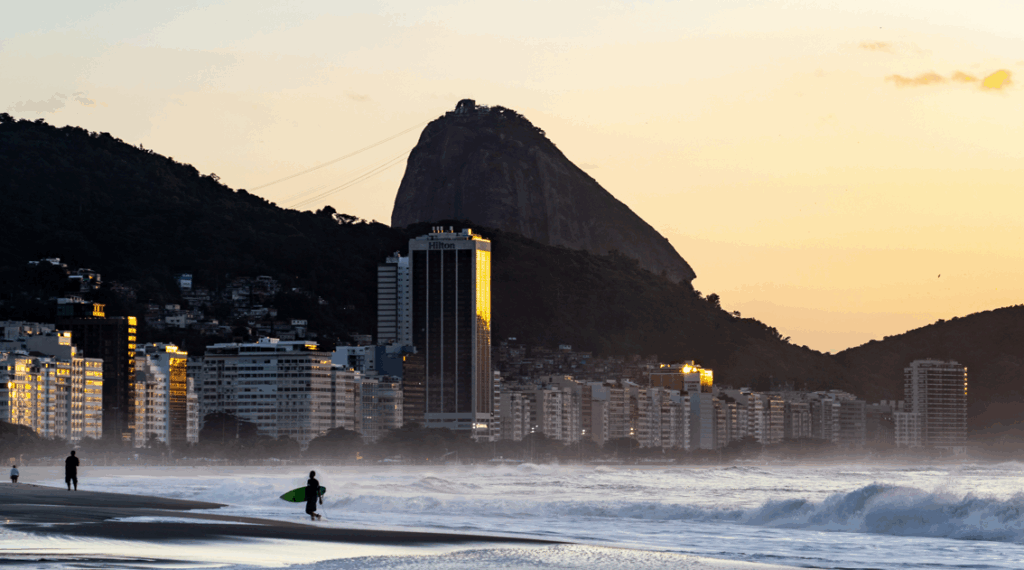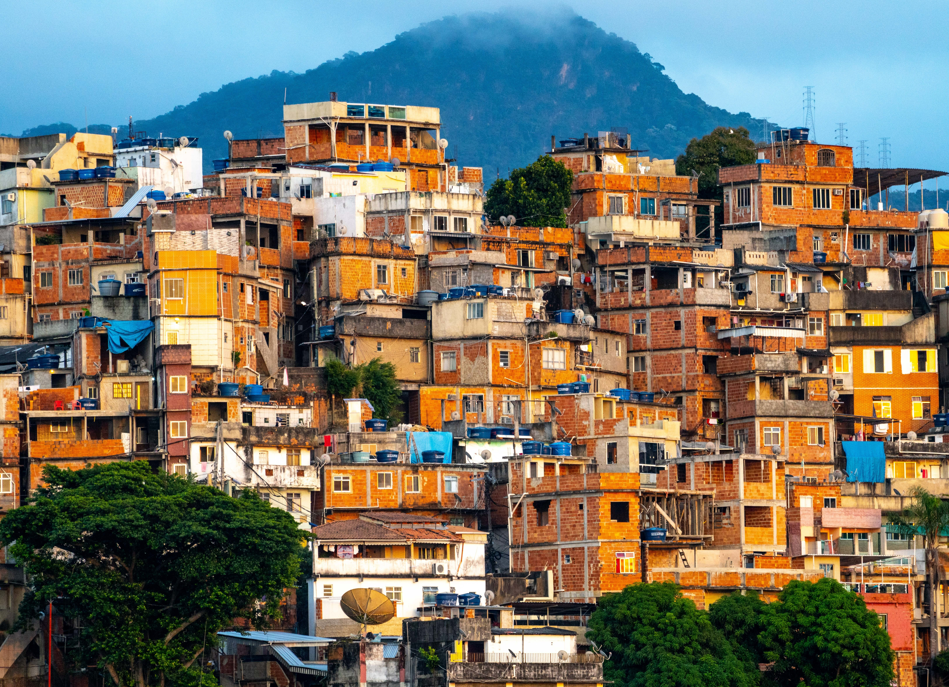Rio De Janeiro
The city stands for dream beaches, beautiful people, carnival and a carefree attitude to life and is certainly a real dream travel destination for many. The location of the city is fantastic and hardly any other metropolis has such great beaches in the city area as Rio de Janeiro. Even in the shopping streets you often see men walking around topless and women in bikini tops. In Rio it is warm and sunny all year round and the Brazilian lifestyle is tangible everywhere.
Sightseeing in Rio:
These are my sightseeing highlights:
Pedra do Arpoador and Coppacabana Beach
It’s best to stop at Pedra do Arpoador. From here you can overlook the entire Ipanema Beach from a small hill and take beautiful photos. However, it can get quite crowded here in the evening. So secure your perfect spot for the sunset early. And for having a special beach day, visit the Coppacabana beach and feel the famouse sand of Rio de Janeiro under your sunburned feet.

Cristo Redentor
What would a trip to Rio be without a visit to the famous Christ the Redeemer statue… Located at an altitude of over 700 meters on Mount Corcovado, the statue has become one of Rio’s most famous landmarks.
If, like me, you are not visiting the attraction as part of a tour but are traveling on your own, you can simply climb the mountain with the Funicular, a cog railway. It is also possible to climb up on foot, but for safety reasons I advise you not to hike to the Christ the Redeemer statue without a local guide.
When you reach the top, if the weather is good, you can expect a great view of the city, Sugarloaf Mountain and the bay with its many small green islands. The 30 meter high statue is also extremely impressive when you stand directly in front of it. However, due to the expected large crowds of tourists on site, it is a challenge to photograph the landmark without other travelers in the picture.
You will also find a small café and toilets at the foot of the Christ the Redeemer statue along with some private traders offering their goods. As expected, the prices for food and drinks here are slightly higher than down in the city.

Metropolitan Cathedral of Sao Sebastiao
t’s not pretty, but it’s rare. That was pretty much my impression of the metropolitan church in the city center. The church, built in the 1970s, has a striking and extremely atypical pyramid shape. Due to its unadorned reinforced concrete facade, it is more reminiscent of an innovative factory building, but certainly not of a house of worship.
The rather unpleasant sight from the outside changes at least partially inside the building. The huge, high interior holds over 5,000 people and the altar is in the middle of the building. The rows of chairs are arranged in a circle around the central altar. Here, too, the church appears rather cold, but at least the high, colorful windows that extend on four sides up to the top of the pyramid give the Catedral Metropolitana a special charm.
If, like me, you are more of a fan of historical buildings, the cathedral in question is probably not for you. Due to its special and innovative appearance, it is still worth a visit.
How dangerous is Rio de Janeiro?
Rio, like most Brazilian cities, has a high crime rate and a bad reputation in this regard. The social differences in the country are very large and, like everywhere else in the world, this leads to increased robberies and pickpocketing in Rio de Janeiro. Travelers are generally viewed as wealthy and are therefore often victims of the crimes mentioned.
Luckily, I haven’t had any bad experiences myself and I still highly recommend that you follow the common basic rules for travelers in disadvantaged countries. The safest parts of the city are in the so-called Zona Sul, the southern part of the city. These include, among others, the famous Ipanema and Copacabana districts. Here too, you should follow the rules mentioned above. The actual city center with its many office buildings and shopping streets is deserted and dangerous after closing time. Even the famous beaches are unsafe after dark and should be avoided at all costs. The poorest and therefore unfortunately most dangerous parts of the city are the large favelas in the north of the city, where a total of around 1.4 million people live.

Eating in Rio
If you are looking for a classic Brazilian restaurant, I can recommend Carretão Classic Grill in Ipanema. Like everywhere in Latin America, the cuisine here is quite meat-heavy. What is special, however, is the fact that at Carretão you pay a fixed price and countless waiters constantly come to the table with different dishes and you can choose as you like. So basically an all you can eat concept without self-service.
The grilled meat here is served on long skewers in typical Brazilian style and cut directly onto the plate. If you’re brave, you can even try traditional dishes like grilled chicken hearts here. I’m usually a vegetarian, but when I travel I occasionally eat meat to try local specialties. I still couldn’t bring myself to eat the chicken hearts…
My real highlight of the quick Brazilian cuisine is, on the one hand, the açai ice cream. While the açai berry has only been available in various forms in Germany for a few years thanks to the superfood trend, in Brazil you can find açai ice cream on every corner. The aubergine-colored ice cream is super delicious and available with all sorts of toppings such as condensed milk, oat flakes and banana slices. Yummy!